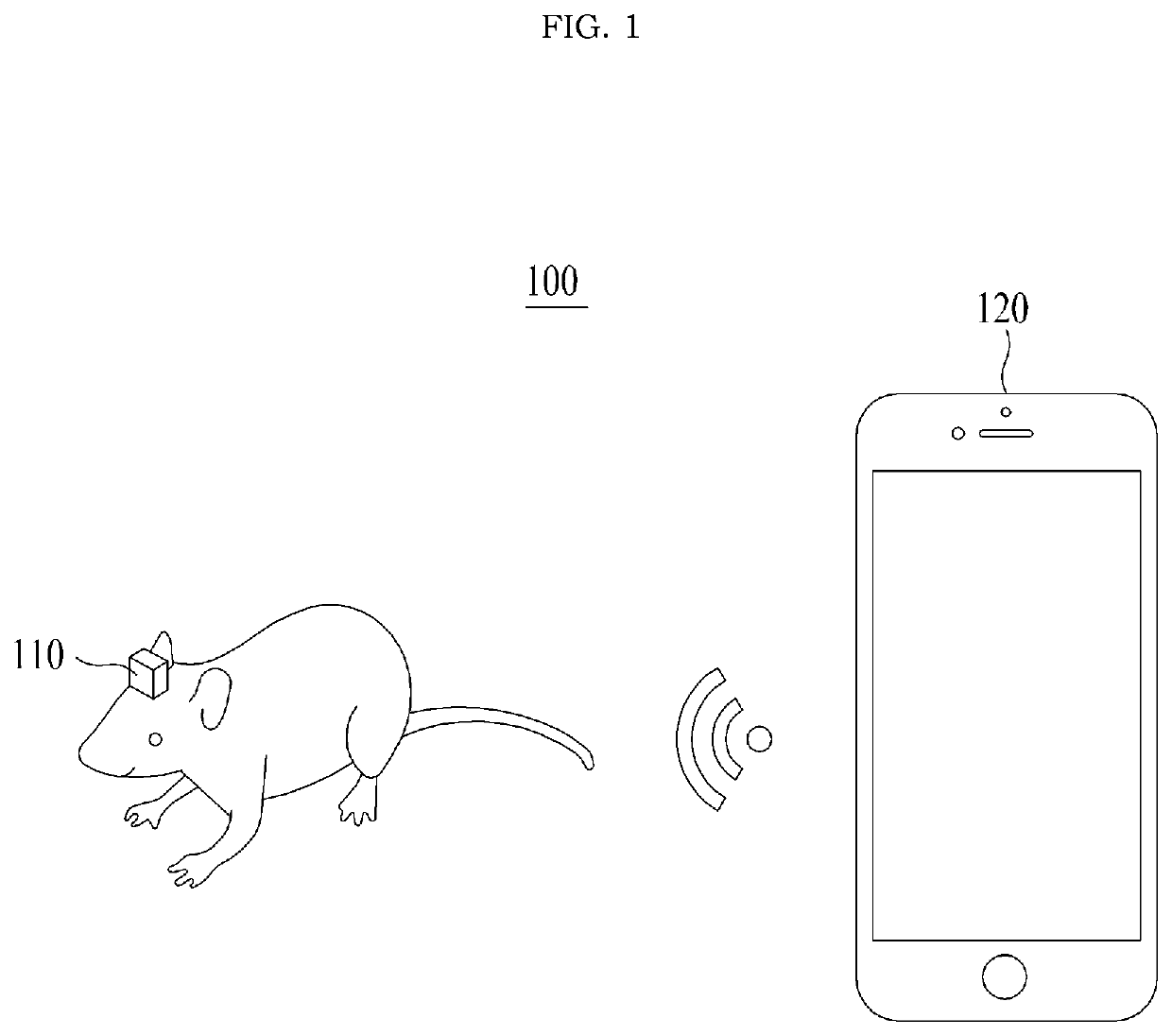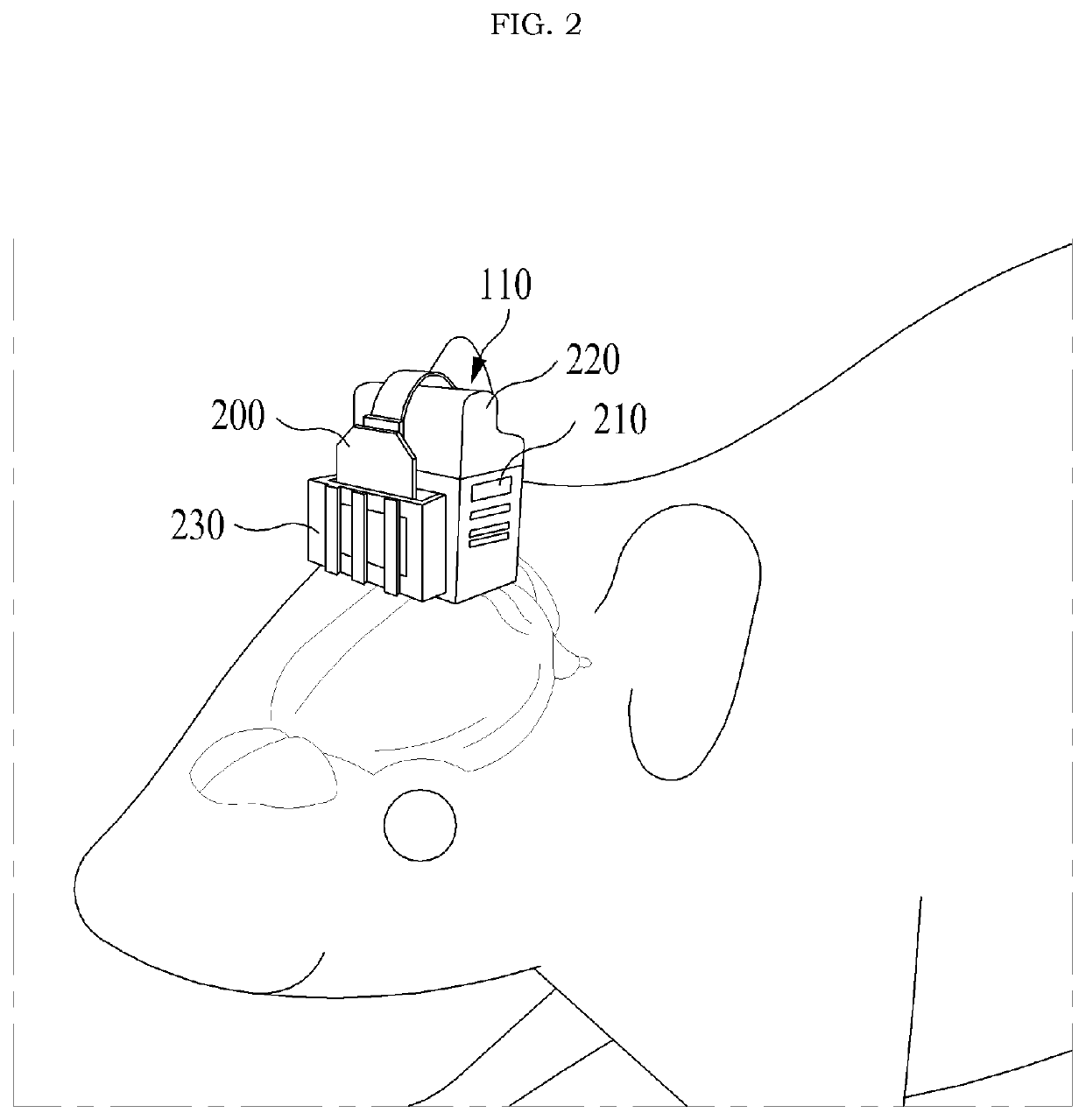Smartphone-controlled implantable neural devices for long-term wireless drug delivery and light stimulation, and operating method thereof
a technology of implantable neural devices and wireless drug delivery, which is applied in the field of electronic devices and the operation method thereof, can solve the problems of difficult to selectively control the same neural circuit with minimal invasion, exacerbating tissue damage and inflammation, and creating neuroglial scarring or aganglionosis phenomenon, so as to minimize the inflammation of the nerve and reduce the damage of the nerve, the use efficiency of the electronic device may be increased, and the effect of minimizing tissue inflammation
- Summary
- Abstract
- Description
- Claims
- Application Information
AI Technical Summary
Benefits of technology
Problems solved by technology
Method used
Image
Examples
Embodiment Construction
[0030]Hereinafter, some example embodiments will be described in detail with reference to the accompanying drawings.
[0031]FIG. 1 is an example drawing illustrating a system 100 according to various embodiments. FIG. 2 is a perspective view illustrating an electronic device 110 of FIG. 1.
[0032]Referring to FIG. 1, the system 100 according to various embodiments may include various electronic devices 110, 120. The electronic devices 110, 120 may include a first electronic device 110 for delivering stimulation to tissue of an animal and a second electronic device 120 for wirelessly controlling the first electronic device 110. The first electronic device 110 may be driven under control of the second electronic device 120, and deliver stimulation to the tissue of the animal. For example, the stimulation may include at least one among chemical stimulation by a fluid form of drug, or optical stimulation by light or electrical stimulation by an electrical signal. Here, the animal may includ...
PUM
 Login to View More
Login to View More Abstract
Description
Claims
Application Information
 Login to View More
Login to View More - R&D
- Intellectual Property
- Life Sciences
- Materials
- Tech Scout
- Unparalleled Data Quality
- Higher Quality Content
- 60% Fewer Hallucinations
Browse by: Latest US Patents, China's latest patents, Technical Efficacy Thesaurus, Application Domain, Technology Topic, Popular Technical Reports.
© 2025 PatSnap. All rights reserved.Legal|Privacy policy|Modern Slavery Act Transparency Statement|Sitemap|About US| Contact US: help@patsnap.com



